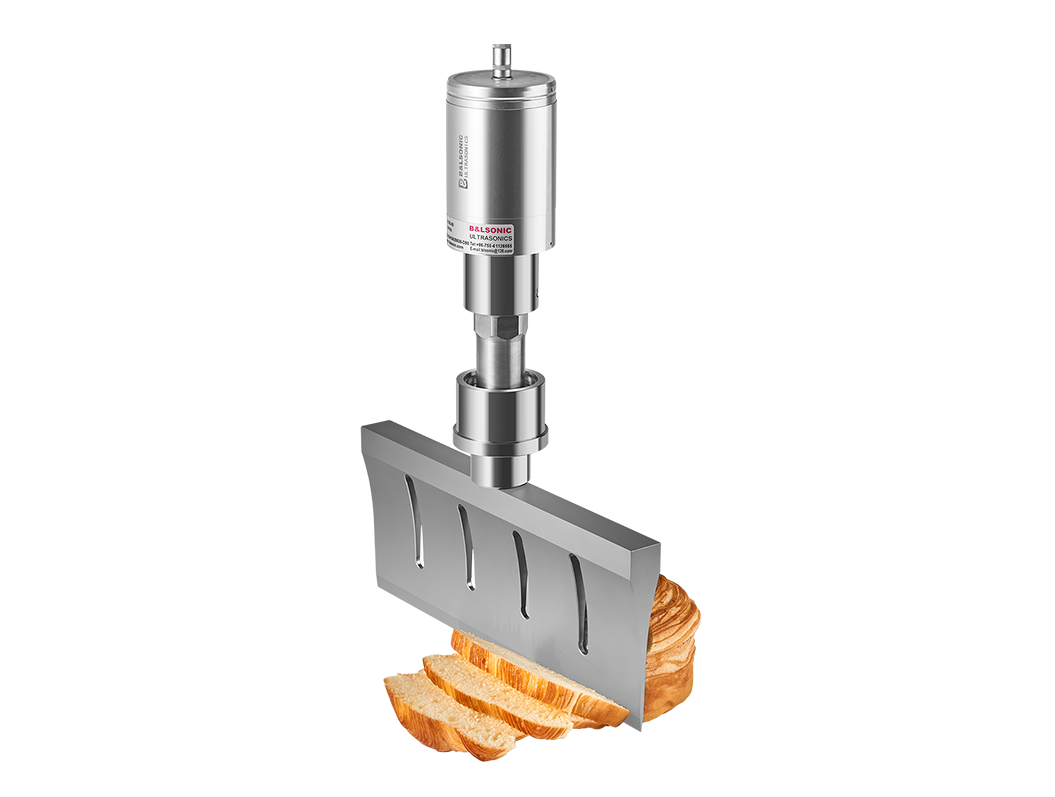
In everyday applications, ultrasonic equipment is commonly utilized for welding thermoplastic materials (such as PE, PVC, PP and PS) to achieve a bonding effect characterized by outstanding water and air tightness. But ultrasonic equipment can only be used for welding?
The answer is no; don't limit yourself! Ultrasonic equipment can also be used for food cutting!
Problems with traditional cutting
When cutting food with traditional devices (tools), the food is rigidly separated under strong pressure, and the food itself bears great pressure. As a result, the cutting effect is often unsatisfactory, and this challenge is even greater when dealing with viscous foods.
Taking cake as an example, traditional cutting devices (tools) tend to damage the cake's original shape and disrupt the smoothness of the cut surface. Additionally, the cream may stick to the cutting devices (tools), requiring frequent cleaning. Both will significantly reduce the cutting efficiency.
To enhance food cutting production and assist food processors in improving cutting efficiency and product quality, ultrasonic technology has been successfully applied in food cutting through extensive research and innovation.
Ultrasonic cutting of food utilizes the cutting edge of the cutter to input powerful ultrasonic energy to the cutting part of the material. Under the intense ultrasonic energy, the internal molecular structure of the material is disrupted, causing it to instantly soften and melt, significantly reducing its strength. Consequently, the resistance against the cutter decreases, thereby achieving the purpose of cutting.

Food cutting with ultrasonic equipment
1. High cutting efficiency
Ultrasonic cutting technology can maintain the integrity of the food being cut to the greatest extent while ensuring precise cutting. At the same time, the low friction resistance prevents the cut food from deforming due to compression and reduces the tendency to stick to the cutting tools. This significantly addresses the shortcomings of existing cutting methods.
2. Applicable to a wide variety of food types
Frozen products, fragile products, sticky foods and creamy foods can all be cut with ultrasonic equipment, such as cakes, candies, meat products and dried fruits. The cut surfaces remain flat and smooth without deformation, preserving and enhancing the appearance of the products.
3. Strong operability
Ultrasonic equipment offers multiple operation modes, allowing manufacturers to customize specific parameters based on their actual production conditions to achieve optimal cutting performance.
The characteristics of ultrasonic cutting include the fact that it does not require a sharp cutter or excessive pressure, and it prevents chipping and damage to the cut material.
The cutter is subjected to ultrasonic vibration, resulting in exceptionally low friction resistance, making it difficult for the cut material to stick to the blade. The effect is obvious for cutting frozen, sticky and elastic materials. It is especially effective for items such as food, rubber or objects where applying pressure is not feasible.
During the cutting process, there is a melting effect at the cutting part. The cutting part is perfectly edge-sealed, preventing any loosening of the material's structure (e.g., fraying in textiles). The applications of ultrasonic cutting equipment can also be expanded to include tasks such as drilling, shoveling, scraper painting, engraving and slitting.
Traditional cutting methods use tools with sharp edges pressed against the material being cut. The pressure is concentrated at the cutting edge, resulting in a very high force that exceeds the shear strength of the material, causing the molecular bonds to separate and facilitate cutting. Since the material is pulled apart by this significant pressure, the cutting edge of the cutter must be exceptionally sharp, and the material itself must endure considerable force. This approach is not effective for soft and elastic materials, and cutting viscous materials poses even greater challenges.



